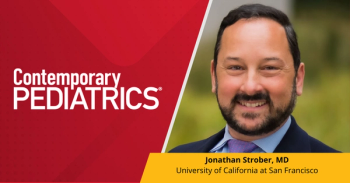
Managing headache with a tiered approach
Headache may be one of the most recognizable health concerns, but managing it may not always be clear. A presentation at the virtual 2020 American Academy of Pediatrics National Conference & Exhibition offers a tiered approach to aid in management.
It’s not an uncommon diagnosis. In fact, it’s the number 1 pediatric neurologic reason for going to the doctor for a visit, utilizing either urgent care or the emergency department, and for referral to pediatric neurology. The headache is also responsible for roughly 200,000 missed days of school per year in the United States. Managing headaches can require deft handling and Christopher B Oakley, MD, assistant professor of neurology at Johns Hopkins Medicine in Baltimore, Maryland, offered an approach to follow in his presentation “Heads up: Headache management in primary care” at the virtual 2020 American Academy of Pediatrics National Conference & Exhibition.
Oakley offered a 4 tier approach to headache management. In the first tier, the clinician should address the lifestyle of the patient who is presenting with headache. Questions about day-to-day activities may include asking whether the child is achieving adequate sleep duration, finding out how much caffeine the child is ingesting, inquiring after the level of hydration, as many children are often not getting the necessary intake of water, whether the child is getting enough physical activity in a week, and discovering how busy the child is. The second tier looks at whether complementary and alternative medicines or therapy can help treat the problem. This tier may include having the child participate in cognitive behavioral therapy, use supplements as CoQ10, or utilize physical therapy. The third tier involves prescribing prophylactic medications such as amitriptyline and topiramate and the fourth tier includes hormonal therapies and procedures such as nerve blocks.
He also addressed how the COVID-19 pandemic may have altered the incidence of headaches as well as treatment. He highlighted how the pandemic has increased stressors because of changes in family dynamics along with increased social isolation. Virtual learning also led to different experiences such as lower educational quality, lack of extracurricular activities, increased screen time, and a feeling of separation from peers. Oakley used the case of a 16-year-old girl to illustrate the impact. She had increased migraines since the start of the pandemic; hadn’t seen her psychologist or physical therapist since before the pandemic began, did not do well with the lack of structure inherent to virtual learning, and was anxious because of familial concerns.
Newsletter
Access practical, evidence-based guidance to support better care for our youngest patients. Join our email list for the latest clinical updates.



